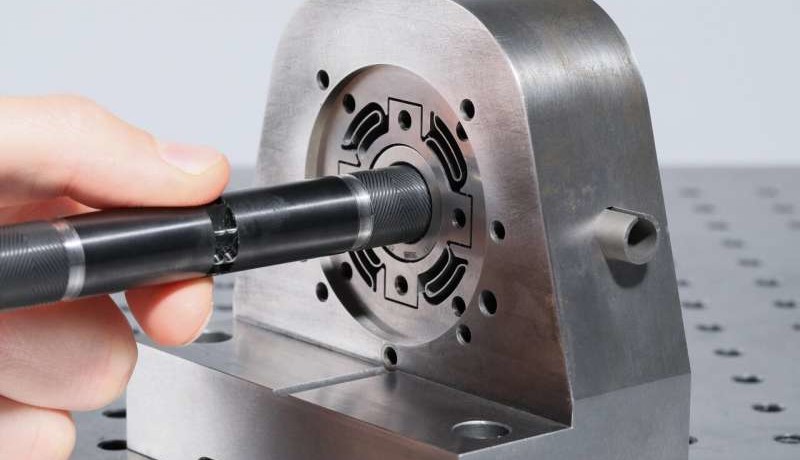A Better Understanding of Air Bearings
April 23, 2020
on
on

Researchers at the Ecole Polytechnique Federale de Lausanne in Switzerland have studied the behaviour of a particular type of mechanical, air-lubricated plain shaft bearing to better characterise its properties. Plain shaft bearings with a herringbone grooved journal are used extensively in high speed and lightweight rotating machinery, such as computer information storage drives. They offer improved stability characteristics compared to conventional smooth journal bearings.
The properties of this type of bearing surface are characterised in the NGT (Narrow Groove Theory), which describes how a kind of air cushion bearing works with fast rotating parts and provides a calculation of the averaged smoothed overall pressure from the circumferential pressure gradient. NGT was proposed in 1965 by engineers Vohr and Chow from Mechanical Technology, Inc. According to their work they obtained optimal values for the groove properties that give maximum radial force and hence give a figure for the maximum radial stiffness of the bearing.
The engineers at EPFL developed a special test jig which allowed them to form a better understanding of this type of bearing. A rotor fitted with various HGJB designs and operated on a test bench at 100,000 rpm was used in the tests. With the help of an oscillation system, bearing properties such as stiffness and damping coefficients could be measured and compared with the predictions of the NGT. They found that the NGT tended to overestimate values. In further experiments, measurements with other gases such as refrigerants will be carried out; these will be important for applications such as heat pumps etc.
The properties of this type of bearing surface are characterised in the NGT (Narrow Groove Theory), which describes how a kind of air cushion bearing works with fast rotating parts and provides a calculation of the averaged smoothed overall pressure from the circumferential pressure gradient. NGT was proposed in 1965 by engineers Vohr and Chow from Mechanical Technology, Inc. According to their work they obtained optimal values for the groove properties that give maximum radial force and hence give a figure for the maximum radial stiffness of the bearing.
The engineers at EPFL developed a special test jig which allowed them to form a better understanding of this type of bearing. A rotor fitted with various HGJB designs and operated on a test bench at 100,000 rpm was used in the tests. With the help of an oscillation system, bearing properties such as stiffness and damping coefficients could be measured and compared with the predictions of the NGT. They found that the NGT tended to overestimate values. In further experiments, measurements with other gases such as refrigerants will be carried out; these will be important for applications such as heat pumps etc.
Read full article
Hide full article


Discussion (0 comments)